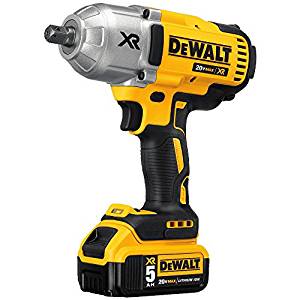Building a project will be a lot more enjoyable if you have the right tools. For many, a cordless drill/driver is indispensable. It can perform a wide variety of tasks with ease, making it a truly reliable companion. There are also specialized models designed to take on unusual challenges. Their sizes, prices, and other features can vary greatly. If you are on the hunt for a new one, then read the following tips to make the right purchase:
TIP No. 1 — Find the Right Kind of Tool for the Job
The number of options can be overwhelming. Different terms that get thrown around add to the confusion. Make sure that you understand each of them so that you end up with what you really need.
- Cordless Drill/Driver
This is without doubt the most popular tool in the market. Its versatility is second-to-none. It can drill slow or fast depending on the task at hand. Fasteners can be driven without effort. This type of product can even drill holes in tough masonry. If you only have enough cash for a single purchase, then this would be it. Read cordless drill reviews to learn more about real-world performance.
- Cordless Right-Angle Drill/Driver
Some tasks will have to be finished while negotiating tight spaces. Regular drills might not be able to fit in these spots, and so the right-angle drill was created. The chuck is perpendicular to the motor shaft so that the bits can get through. It is a very popular tool among plumbers and electricians who often need to work in cramped areas.
- Cordless Impact Wrench
If you have ever encountered stubborn fasteners, then you will know that regular tools don’t always get the job done. You need something that has enough power to loosen large lug nuts so that you don’t end up wasting the whole day. Cordless impact wrenches can do this thanks to their clever internal mechanisms in a small and light package.
Many professional auto mechanics and weekend warriors love the versatility of not having to be bogged down with dragging around air-tools, opt for cordless impact wrench to get the job done.
Finish your tasks with greater efficiency, better results, and enhanced comfort.
- Cordless Screwdriver
This is a lightweight screwdriver that is good for small fasteners. It may have limited application but it does the job really well. There is no point in using a larger tool all day if this smaller one can suffice. You will not get tired right away and you can work with narrow openings.
TIP No. 2 — Make Comfort a Priority
As much as possible, try out different tools and see how they feel in your hands. You will realize that some feel much better to hold than others. The balance and ergonomics can play a big role in long-term comfort. Each person is different so there is no universal answer. The rule of thumb is to buy the smallest tool that is adequate for your challenging jobs to delay the onset of fatigue. The best 20V drill is not only powerful. It is also comfortable.
TIP No. 3 — Battery and Charger
Batteries allow these tools to run cordless. Their capacity directly affects the power and runtime while their composition influences the weight and price. Ni-Cad is a cheap and reliable option. Li-Ion is more expensive but lighter and less prone to drain. Compare the voltage and ampere-hour ratings of various products before buying. Most people purchase at least two batteries for quick swaps. Check the chargers as well. Some are faster than others, allowing you to get back to work right away.
TIP No. 4 — Find a Suitable Chuck Size
Consider an appropriate chuck size which is nothing more than the largest bit that can be accommodated. A half-inch chuck should be a good start. It is enough even for making holes in masonry.
TIP No. 5 — Consider the Speed of the Tool
The speed is measured in revolutions per minute or RPM. For drilling, it is usually upwards of 1,200 RPM make holes fast. For driving screws, it is much lower at around 300 RPM since the torque matters more than speed. Some tools are able to keep their speed despite challenging loads.
TIP No. 6 — Test the Clutch Performance
The driving force can be varied to prevent excessive force using a clutch. For instance, using too much power to drive a screw can create cracks in sensitive materials. Thus, the resistance level must be set to a reasonable amount to control the force. This mechanism also prevents the motor from suffering from heat damage.
TIP No. 7 — Check the Power Rating
The voltage rating indicates the power potential of the tool. Generally, a higher value will lead to a higher torque, but it will also mean carrying a heavier weight. If you are always working with massive fasteners, then you may not have a choice but to go for the most powerful drivers. If not, then opt for a lower voltage rating to save yourself some money. The best 18V drill should be more than sufficient for the average DIY enthusiast.

